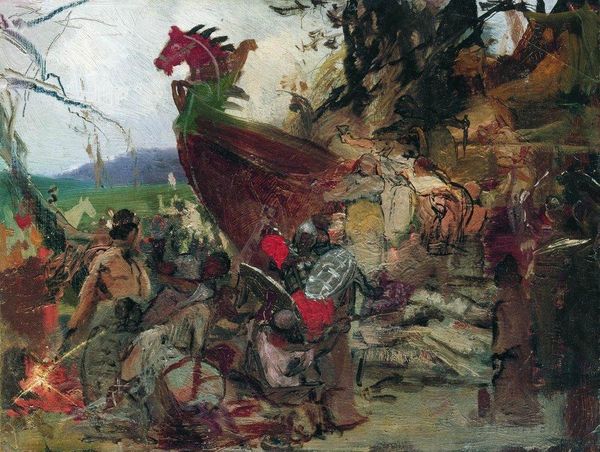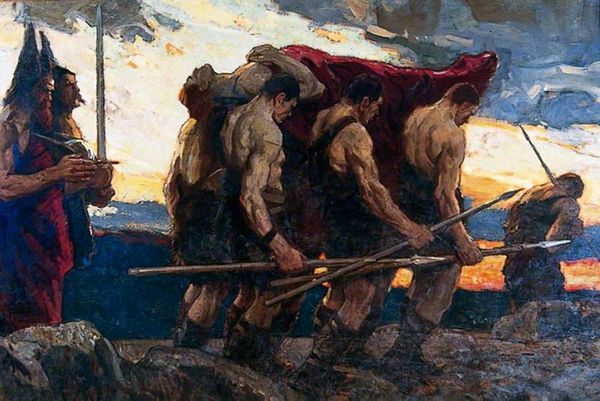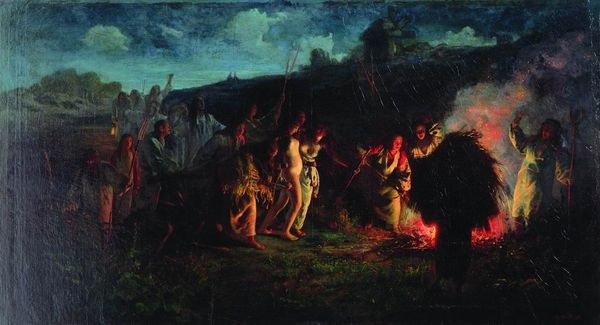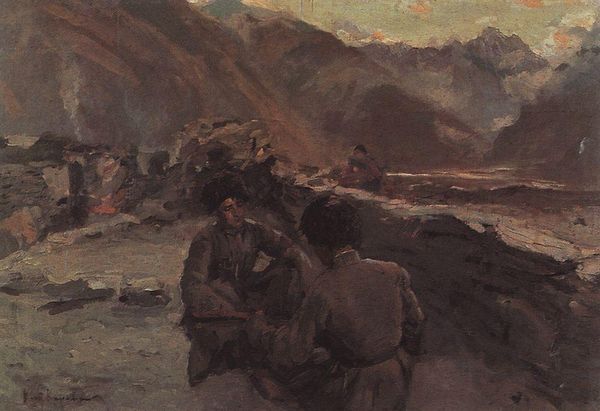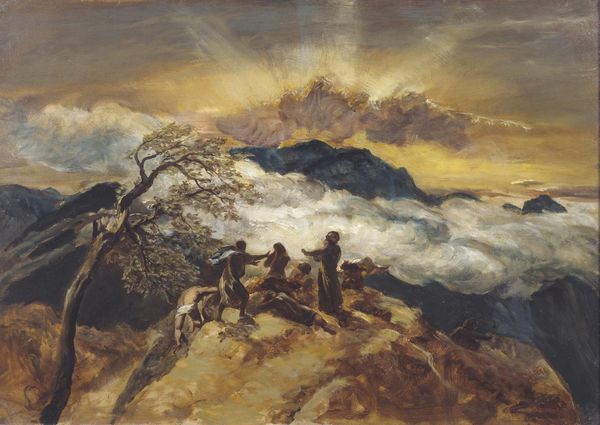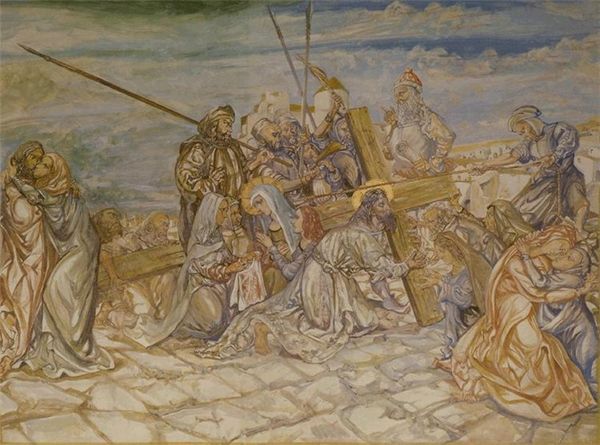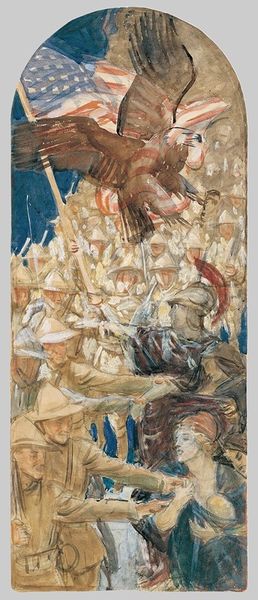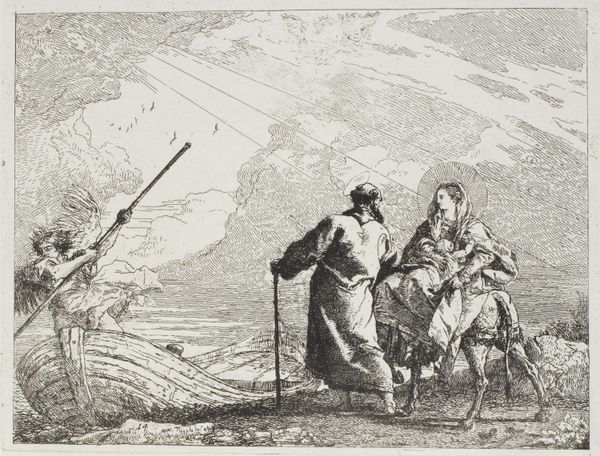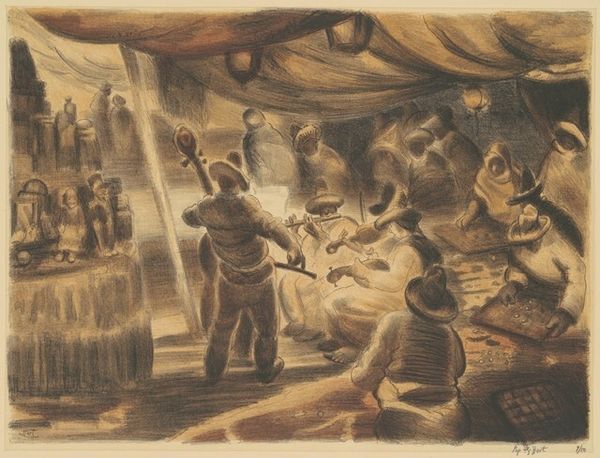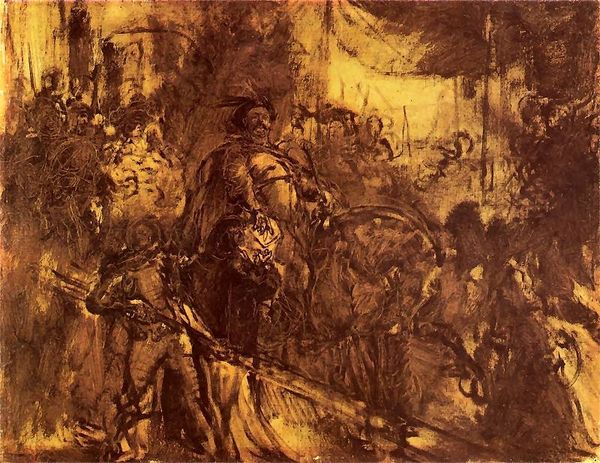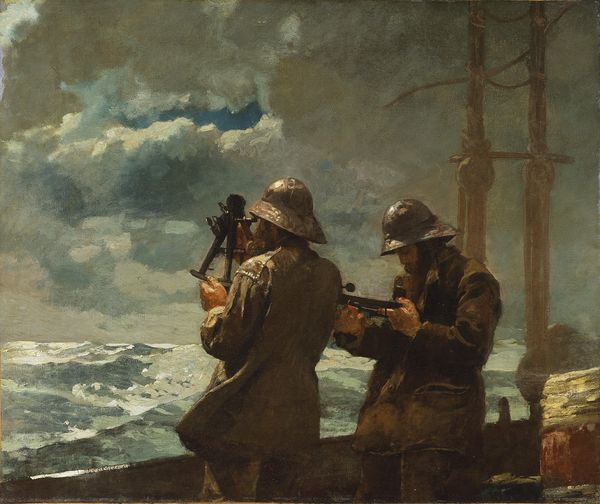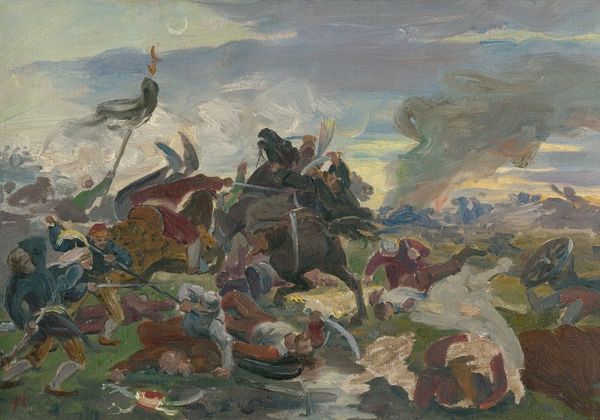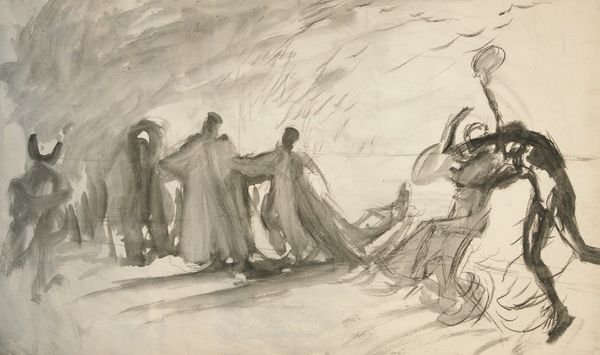
Copyright: Public domain
Curator: Wow, there's so much turbulence and frenzy communicated through the image's composition and execution. Editor: Let’s take a closer look at Akseli Gallen-Kallela’s, “The Storm,” created around 1902 using oil paint. At first glance, what draws my attention is the implied instability of the figures within their boat during an obvious crisis. Curator: The thickly applied impasto technique seems to mimic the physical forces—a roiling ocean and a palpable atmosphere almost threatening to tear right through the canvas. You can nearly feel the wood of that boat creaking. What's striking to me is how the laboring bodies, clinging onto spars or oars, illustrate the conditions of production. What were their working lives actually like? Were they fairly compensated, for instance? Editor: I’m intrigued by the figures as well. What do the demographics tell us? Are these the weathered faces of men who brave dangerous conditions daily to feed their families? Are the yellow rain slickers we see referencing cultural depictions of the period, and who profits from their hardship, as the materials used to portray them also mirror specific choices of what is being offered and by whom in a wider social perspective. Curator: Right! Consider the labor involved in painting like this at the turn of the century. The pigment preparation alone speaks to certain levels of training. But beyond the elite sphere of art production, those yellow slickers remind us that these subjects themselves were engaged in highly physical and probably very dangerous production. I find myself considering their lived experience based on the way the materiality is emphasized here. Editor: Absolutely. And the lack of individual distinction among them—they're all facing death together; rich man, poor man…aren't these the leveling effects of climate that disproportionately affect coastal communities worldwide to this very day? What narrative power does this shared vulnerability project as we see ourselves in the legacy of resource mismanagement and colonial exploration. Curator: It becomes less a symbolic storm, and more a document of working conditions. Editor: The canvas has become witness, which is the truest impact on myself. Curator: An interesting observation that bridges material reality with artistic commentary. Editor: The layers certainly deepen with a deeper appreciation of the cultural weight behind this work.
Comments
No comments
Be the first to comment and join the conversation on the ultimate creative platform.
